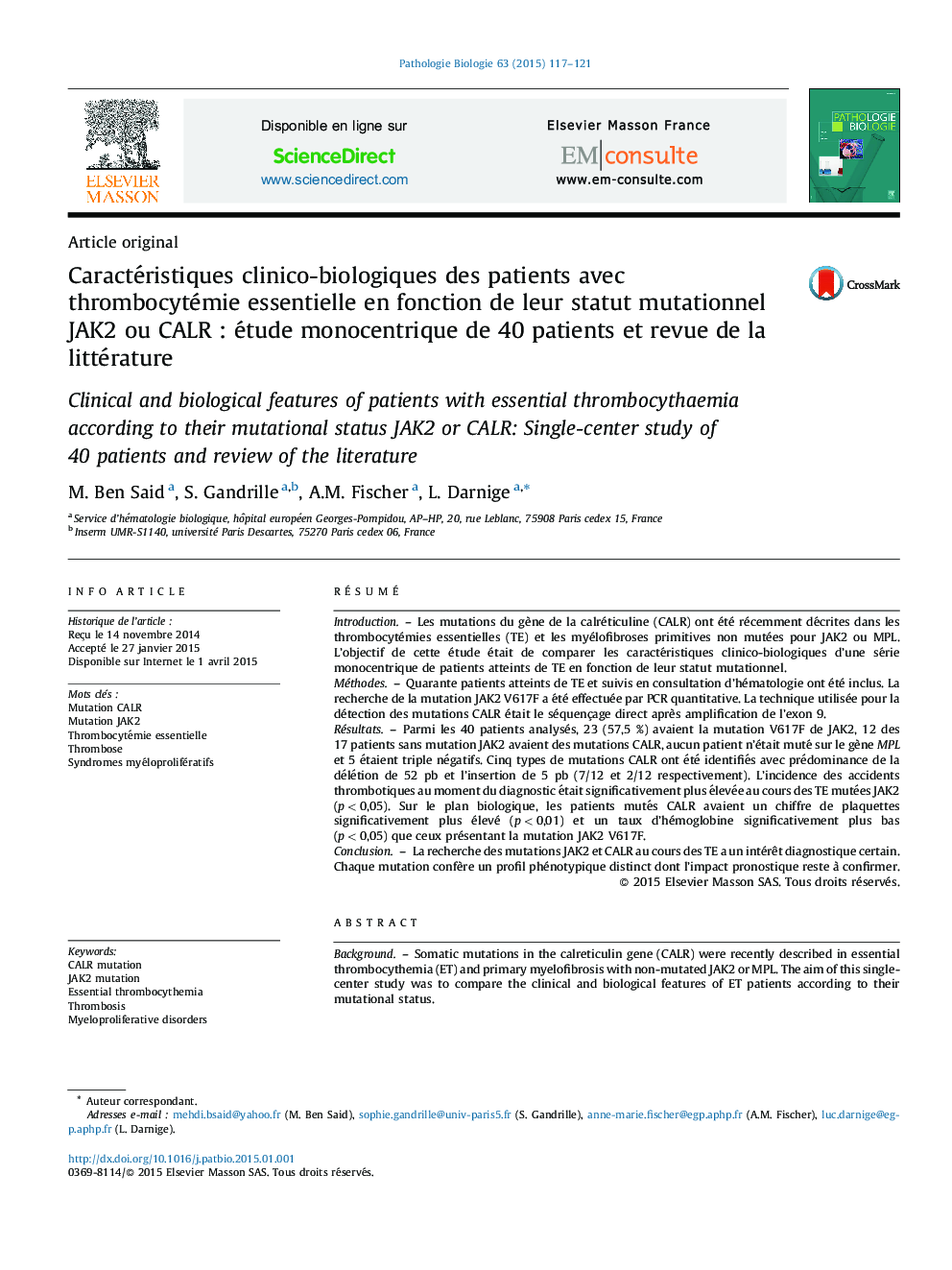| Article ID | Journal | Published Year | Pages | File Type |
|---|---|---|---|---|
| 4135886 | Pathologie Biologie | 2015 | 5 Pages |
RésuméIntroductionLes mutations du gène de la calréticuline (CALR) ont été récemment décrites dans les thrombocytémies essentielles (TE) et les myélofibroses primitives non mutées pour JAK2 ou MPL. L’objectif de cette étude était de comparer les caractéristiques clinico-biologiques d’une série monocentrique de patients atteints de TE en fonction de leur statut mutationnel.MéthodesQuarante patients atteints de TE et suivis en consultation d’hématologie ont été inclus. La recherche de la mutation JAK2 V617F a été effectuée par PCR quantitative. La technique utilisée pour la détection des mutations CALR était le séquençage direct après amplification de l’exon 9.RésultatsParmi les 40 patients analysés, 23 (57,5 %) avaient la mutation V617F de JAK2, 12 des 17 patients sans mutation JAK2 avaient des mutations CALR, aucun patient n’était muté sur le gène MPL et 5 étaient triple négatifs. Cinq types de mutations CALR ont été identifiés avec prédominance de la délétion de 52 pb et l’insertion de 5 pb (7/12 et 2/12 respectivement). L’incidence des accidents thrombotiques au moment du diagnostic était significativement plus élevée au cours des TE mutées JAK2 (p < 0,05). Sur le plan biologique, les patients mutés CALR avaient un chiffre de plaquettes significativement plus élevé (p < 0,01) et un taux d’hémoglobine significativement plus bas (p < 0,05) que ceux présentant la mutation JAK2 V617F.ConclusionLa recherche des mutations JAK2 et CALR au cours des TE a un intérêt diagnostique certain. Chaque mutation confère un profil phénotypique distinct dont l’impact pronostique reste à confirmer.
BackgroundSomatic mutations in the calreticulin gene (CALR) were recently described in essential thrombocythemia (ET) and primary myelofibrosis with non-mutated JAK2 or MPL. The aim of this single-center study was to compare the clinical and biological features of ET patients according to their mutational status.MethodsWe included 40 patients with ET followed in hematology consultation. The JAK2 V617F mutation was assessed by quantitative PCR. For the detection of CALR mutations, we performed a PCR amplification of CALR exon 9 followed by direct sequencing.ResultsAmong 40 study patients, 23 (57.5%) harbored V617F JAK2, 12 of the 17 patients without JAK2 mutation harbored CALR, no patient expressed MPL mutation and 5 were negative for all three mutations. Five types of mutations were identified with predominance of 52 bp deletion and 5 bp insertion (7/12 and 2/12 respectively). The incidence of thrombotic events at diagnosis was significantly higher in JAK2 mutated patients (P < 0.05). Biologically, patients with CALR mutation had significantly higher platelet count (P < 0.01) and significantly lower hemoglobin level (P < 0.05) than those with V617F JAK2 mutation.ConclusionJAK2 and CALR mutation screening in ET has a diagnostic value. Each mutation displays a distinct phenotype with uncertain impact on long-term outcome.
